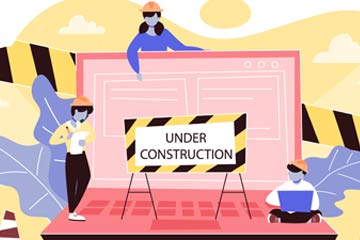The ESE Series
Exceptional Student Education
This series offers a variety of online courses for educators that will increase their understanding of diverse learning needs and build their skills in creating accommodations and modifications to the environment and curriculum. Courses are designed for general education teachers, special education teachers and paraprofessionals.
Reading Intervention

Course Length: 5 hours
Working With Struggling Readers
When students know how to appropriately manage their emotions, it frees up their minds for learning. In order for our students to handle daily stresses, work well with others, and be empowered, they need to be taught important life skills like social awareness, emotional regulation, and self awareness. Explore the basics of SEL and watch classroom examples of elementary teachers in action.

Course Length: 2.5 hours
Dyslexia in the Classroom
Individuals with dyslexia are unique and their challenges with reading, spelling, and/or speaking vary greatly from person to person.In this course, you will learn about the signs of dyslexia, common misconceptions and classroom strategies that can make a real difference. You will also be introduced to a multisensory approach to instruction and explore the need for a structured literacy program.

Course Length: 2.5 hours
An Introduction to Dyslexia Accommodations and Modifications
For many of us, reading is as automatic as breathing. But for the millions of students with dyslexia, reading is a difficult task that poses constant academic and emotional challenges. In addition to quality intervention, students with dyslexia benefit from classroom accommodations that take into account their unique processing challenges and allow them to demonstrate their content understanding and access the curriculum with more ease. Modifications are also often needed. In this course, you will explore the difference between accommodations and modifications and be introduced to new strategies that will benefit your students.

Course Length: 4.5 hours
4 Key Strategies for Students with Dyslexia
Dyslexia is a lifelong condition. With proper help, many people with dyslexia can learn to read and write well. Early identification and treatment is the key to helping individuals with dyslexia achieve in school and in life. Schools can implement academic accommodations and modifications to help students with dyslexia succeed. Accommodations level the playing field for students with dyslexia...they do not give an unfair advantage. An accommodation can be the bridge between success and failure. In this course, you will review the signs of dyslexia and explore easy accommodations all teachers can make in their classrooms.

Course Length: 3 hours
6 Accommodations for Students with Dyslexia
While dyslexia is a life-long condition, early identification, support from a parent or teacher, and access to digital or audio books and other learning materials may help your child to improve their learning outcomes and be better prepared to successfully work around their learning disability. Research now demonstrates that when children with LD are given accessible instructional materials (often referred to as AIM), textbooks or learning materials that are delivered in audio and/or digital formats, they can excel in school and also learn to enjoy reading. In this course, you will explore six key accommodations for students with dyslexia.
Autism

Course Length: 4 hours
Understanding Autism
Autism Spectrum Disorder a disorder of neural development characterized by impaired social interaction and verbal and non-verbal communication, and by restricted, repetitive or stereotyped behavior. In this course, you will learn about Autism Spectrum Disorder, Asperger’s Disorder, Pervasive Developmental Disorder (PDD-NOS) and Childhood Disintegrative Disorder (CDD).

Course Length: 3.5 hours
Autism in the Classroom
What's more rewarding than watching a child with autism blossom in their learning right before your eyes? Educating students with autism is an intensive undertaking, that involves many working parts and people. This course will provide you with practical instructional strategies to use when working with your students with autism. Explore classroom modifications, constant time delay, task analysis, visual supports, social cues and more.

Course Length: 5 hours
ADHD: What Teachers Need to Know
ADHD is often more complex than most people realize. Like an iceberg, many problems related to ADHD are not visible. ADHD may be mild, moderate or severe, is likely to coexist with other conditions, and may be a disability for some students. Is it over-diagnosed? Do children outgrow it? Does medication help? ADHD is likely the single-most common learning and behavioral problem for kids. It’s also a major problem for adults, resulting in relationship breakups, job failures, drug abuse and a great deal of underachievement . Throughout this course, you will learn the answers to some commonly asked questions about ADHD, you will examine the diagnostic criteria, gain new insight into what it’s like to have ADHD and explore effective teaching strategies that make a difference for students with ADHD.
Other Exceptional Needs

Course Length: 6.5 hours
Learning Disabilities: From Identification to Intervention
Far too often, learning disabilities aren’t even identified until a child starts school. Many students with learning disabilities have average to above-average intelligence and display no signs of difficulty, except when they attempt the specific academic tasks that challenge their particular area of cognitive processing. Throughout this course, you will explore the different types of learning disabilities and better understand the realities for people living with these disorders. Learn how to use explicit instruction in learning strategies, differentiation and direct instruction.

Course Length: 2 hours
Sensory Processing Disorder – Classroom Strategies
Some kids seem to have trouble handling the information their senses take in. Because of SPD (Sensory Processing Disorder), they have difficulty responding normally to sensations that others hardly notice or simply take in stride.This can be tough on kids and get in the way of them functioning effectively in school, learning, and making friends. In this course, you will learn how to identify signals that a student is experiencing issues related to SPD and effective ways to help them navigate in school, where senses can be overloaded and overwhelming.
Gifted and Talented

Course Length: 4.5 hours
Acceleration of Student Learning for Advanced Students
All students come to school wanting to learn and grow. Working with gifted students requires classroom and curriculum modifications that will challenge and best meet their higherlevel learning needs. Effectively modifying curriculum can bring about results that are highly rewarding for both teachers and students. The assignments and resources in this course will teach you about modifying curriculum, content, and processes to best meet the needs of your gifted and advanced level students.

Course Length: 7 hours
Teaching the Gifted and Talented
Studies conducted during the last few decades have demonstrated both the need for and the benefits of gifted education programs. Of special interest are the benefits that occur for ALL children when gifted education strategies are implemented effectively. In this course, you will explore the nature of giftedness and strategies to connect with high ability students.
Classroom Management / Behavior

Course Length: 1.5 hours
Beyond Behavior Modification
Behavior modification and positive reinforcement strategies don’t work for all students. If they have been impacted by trauma and adverse childhood experiences, you need to think differently about how to connect and respond. In this course, you will explore 10 suggestions that will help you better connect with your most challenging students.

Course Length: 2.1 hours
Positive Behavior Supports in Action (v2)
When students know how to behave in the classroom, not only will they feel safe, but they will be better able to achieve academic success. Throughout this course you will be introduced to the Positive Behavior Support system for managing student behavior in the classroom. You will learn how to create effective rules, and will learn how a three-tiered system of support can be effective in creating an atmosphere of positive discipline in your school.

Course Length: 2 hours
ACES 101 - The Profound Impact of Adverse Childhood Experiences (Trauma1)
The impact of trauma and its long-term effects on overall health has garnered a great deal of media attention in the last few years. More than likely, you've heard terms like trauma-informed or trauma-aware. Although you've heard these terms, you may be wondering, what does this have to do with me, as a teacher?

Course Length: 2.5 hours
Scenarios - Don’t You Dare Throw that Chair!
(elementary and secondary versions
available)
In this course, you will view common classroom scenarios like students and teachers struggling with transitions, outbursts, class clowns, cell phones, hoodies, etc. You will have the unique opportunity to view the teacher fail to respond effectively and observe how the situation escalates. You will hear analysis of what went wrong and then view the same scenario come to a more productive resolution as the teacher changes her approach. These scenarios will give you a window into the classroom of other teachers to see how you can best apply de-escalation strategies and trauma-informed practices.

Course Length: tbd hours
What Student Behavior is Telling You
In every classroom, students’ behavior is an important form of communication. Students may call out in class, push in line, or withdraw with their heads down on their desks. In each case, the behavior is a sign that they may not have the skills to tell you what they need. Sometimes, students may not even know what they need. What are your students trying to communicate? How can you respond to the student, not the behavior? In this course, you will be challenged to think about behavior as a state of regulation and learn to look into what is driving the negative behavior. Knowing the function of the behavior will allow you to be proactive in identifying ways to prevent behavior issues in the future.
Inclusion / CoTeaching / School Climate

Course Length: 1.5 hours
Circle of Support: School-Wide Connections with Special Education Students
A positive student-teacher relationship is one of the most important aspects of effective education. Although the importance of building positive connections applies to all student-teacher relationships, it may be even more important in special education. Building on the foundation of a positive relationship and teaching students in a way that capitalizes on their abilities, strengths and experiences can help improve their learning and achievement. In turn, this can foster improved student self-confidence, leading to continued learning and success. In this course, you will learn strategies to build positive relationships with you unique students of all abilities.

Course Length: 4 hours
Effective Intervention Assistance Teams
Two heads are better than one. This adage is never truer than when a student is struggling academically. Understanding the value of education in life, educators have created a process by which they can offer timely and effective intervention to the struggling student. This process is known as “Intervention Assistance Teaming” or IAT. Throughout this course you will learn all there is to know about the IAT model and how it can be used to break the pattern of failure in your school.

Course Length: 4 hours
Inclusion Breakthrough
Teachers will agree that every student is important and deserves the best education possible. However, including all students in regular classrooms has been something that not all teachers are prepared for. Research has shown, that with the right training and support, all students can benefit from an inclusive educational environment. The purpose of this course is to show teachers and paraprofessionals how to make inclusion work.
Legal / Procedural Issues in Special Education

Course Length: 6.5 hours
Mastering RTI - A Step by Step Approach
RTI is not a special education initiative! Many educators continue to have questions about this comprehensive academic and behavioral intervention process. A step by step approach for implementing RTI that ensures ALL students learn. Explore universal screening, progress monitoring, data-based decisions, scientifically based interventions and the importance of implementing with fidelity.

Course Length: 4 hours
Special Education Law: 12 Common Scenarios
As teachers and administrators, we can find ourselves in challenging situations when trying to do what we think is best for our special education students without really knowing if we are complying with the law. During this practical course, you will explore videos that contain common issues that occur when working with IEPs, parent meetings, functional behavior assessments and least restrictive environments.

Course Length: 3.6 hours
Writing Quality IEPs
IEP is an acronym that stands for Individualized Education Plan or Program. But an IEP is more than just a written legal document. It provides a specially designed instructional plan to meet the unique needs of a child with a disability. Through taking this course, you will learn how to write effective IEPs and participate as a critical, productive member of the IEP team. You will learn about the important components that make up a written IEP, including Present Level of Performance and SMART goals and how to write these. You will also learn about myths and misconceptions that often surround IEPs and special education. You will have the opportunity to observe several IEP meetings in action and learn about specific portions of IDEA law from a subject matter expert.